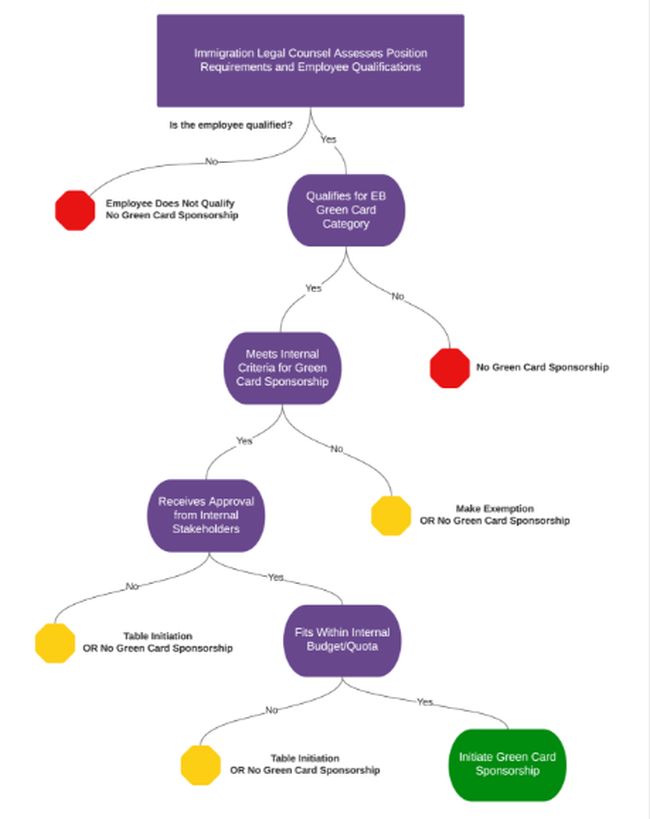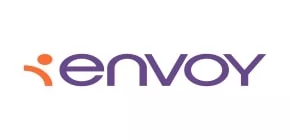- within Immigration topic(s)
- in United States
- with readers working within the Media & Information and Retail & Leisure industries
For foreign nationals, the employment-based green card process is an opportunity to secure a permanent life in the U.S. That said, employers make the decision of whether and when to start the green card process for a foreign national employee. In today's competitive labor market, foreign nationals are keen to join employers with favorable green card sponsorship policies.
In Envoy's 2022 Immigration Trends Report, we found that U.S. employers are taking steps to implement green card policies specifically focused on attracting and retaining foreign national employees. These policies include starting the green card process sooner, sponsoring more green cards and investing more in the green card process.
The key question for employers is how to determine when to start the green card process for their foreign national employees. There are a range of factors involved in this decision but establishing a green card policy to determine when to start the process is key for employers to attract and retain top foreign talent.
The Employment-Based Green Card Pathway
The employment-based green card process is a lengthy journey that involves considerable time and resources. There are five preference categories that fall into employment-based (EB) green cards, but the three most common categories sponsored by employers include:
- EB-1: Priority Workers
- EB-2: Advanced Workers
- EB-3: Skilled or Other Workers
An organization's immigration legal counsel can typically advise on which category a foreign national employee is eligible for based on their qualifications and experience. From there, the green card process can be kicked off. The process consists of three main steps:
- Program Electronic Review Management (PERM) process filed with
the Department of Labor (DOL), which consists of the following
measures:
- Prevailing Wage Determination (PWD) filed with the Department of Labor
- Recruitment, also known as the Labor Market Test
- Filing of the PERM on form ETA 9089 with the Department of Labor*
- Immigrant Petition (Form I-140) filed with U.S. Citizenship and Immigration Services (USCIS)
- Application to Adjust Status (Form I-485, aka green card application) filed with USCIS
* EB-1: Priority Workers do not require PERM certification and jump right to filing the Form I-140.
The Priority Date is established on the date that the PERM (ETA 9089) is filed with the Department of Labor. It dictates when an individual can apply for the Adjustment of Status (AOS) and ultimately receive the green card.
There are certain limitations on the number of green cards issued per year, as the government allocates a certain percentage of green cards annually for each employment-based category and country.
Estimating Green Card Costs, Time and Resources
The employment-based green card process is driven by the sponsoring employer and their immigration legal counsel. The foreign national employee does play a role in providing information required for the various applications in the process, but the predominant cost, time and resources needed for employment-based green cards are the obligation of the sponsoring employer.
As such, it's crucial for employers to understand the commitment involved in sponsoring an employee for a green card. Immigration legal counsel is the primary resource for employers and their employees engaged in the green card process. Employers can determine their criteria for proceeding with sponsorship by possessing at least a basic understanding of the time, cost and resources involved in the green card process.
Here is a high-level view of the estimated timeline employers can expect during the green card process:
|
Green Card Stage |
Where is it filed? |
Government processing times |
|
Department of Labor (DOL) |
4-6 months* |
|
|
This process typically takes place with the employer, immigration legal counsel, and different ad placement services. It typically takes 2-3 months to complete recruitment, assuming no speed bumps along the way. Make sure to discuss the pros and cons of concurrent recruitment with your legal counsel. |
N/A** |
|
|
ETA-9089 |
Department of Labor (DOL) |
4-6 months* |
|
I-140 (EB-1) |
USCIS |
5-8 months* |
|
I-140 (PERM based, EB-2/3) |
USCIS |
5-8 months* |
|
I-485 |
USCIS |
13-33 months* |
*Timelines are subject to change due to changing processing times. Processing times are available on the USCIS and DOL websites, respectively.
**Timeline can vary depending on the factors related to the employer and foreign national employee, but typically takes 2-3 months.
In addition to time, cost is a key factor in deciding whether to proceed with green card sponsorship for a foreign national employee. Costs for the green card process can be organized into two buckets: government filing fees and legal fees. There can also be additional costs for the recruitment portion of the PERM process.
The government filing fees may consist of, but are not limited to, the following:
- Form I-140: $700
- Premium Processing (Form I-907): $2,500
- Form I-485 (AOS): $1,225
Immigration legal counsel fees and recruitment fees can vary. To better estimate this cost, employers can liaise with their immigration legal counsel.
Employers offer to cover a range of different fees related to the green card process. In Envoy's 2022 Immigration Trends Report, 77% of employers said they cover all green card fees, and 52% attach a contractual stipulation for employees who leave the company within a certain time period. Additionally, 35% of employers said they pay for the green card applications for the dependent family members of their foreign national employees. For employers, establishing a policy to manage the costs related to green card sponsorship is critical for maintaining a cohesive program.
Lastly, employers should understand what resources may be required to sponsor foreign national employees for green cards. Typically, the HR or dedicated global mobility team at an organization oversees the green card process and coordinates with immigration legal counsel to provide any information or documents required. Foreign national employees and their managers may also need to dedicate time to the process.
Overall, it is important for employers to establish policies for managing the time, costs and resources related to green card sponsorship. Clear policies enable organizations to avoid mistakes, delays and avoidable expenses in the green card process.
The Decision Tree
To streamline the process of determining whether and when to sponsor a foreign national employee for a green card, it can be helpful to build out a decision tree as a reference point. While the factors included will vary depending on the size and scope of an organization's immigration program, here is a decision tree for green card sponsorship that includes some common factors for any organization:

Here is a detailed breakdown of what each "branch" could look like for an organization:
- Assess Position Requirements and Employee Qualifications. The first filter for determining whether to sponsor a foreign national employee for a green card is to ensure they qualify. Immigration legal counsel can assess the foreign national employee's qualifications and the position requirements for the role they hold at the organization to make this determination.
- Qualifies for EB Green Card Category. If immigration legal counsel confirms that a foreign national employee qualifies for an employment-based green card, an employer can then decide whether and when to start the green card process.
- Meets Internal Criteria for Green Card
Sponsorship. Each organization may set its own internal
criteria that a foreign national employee must meet to initiate the
green card process. For example, some employers start the green
card process immediately upon a foreign national employee joining
the company or within a set time after they join – such as
after one year of employment is completed. Other employers initiate
the process sometime before the foreign national employee's
first H-1B extension.
- One important note: the H-1B visa is capped at six years. According to the 2022 Immigration Trends Report, many employers choose to start the green card process before their foreign national employee reaches the six-year limit on H-1B. Once a foreign national's Form I-140 is approved, they are eligible to extend their H-1B status past the six-year limit while they await their priority date to become current.
- Receives Approval from Internal Stakeholders. While a foreign national employee may meet the established internal criteria for green card sponsorship, some organizations may choose to require the approval of internal stakeholders like hiring managers, finance teams, HR teams or members of the leadership team to proceed with initiating the process.
- Fits Within Internal Budget/Quota. To remain within the budget for annual immigration expenses, some organizations may cap the number of green cards they are willing to initiate sponsorship for foreign national employees each year.
The factors in this decision tree offer the building blocks for an organization to establish its own policies for green card sponsorship, but additional or more detailed processes may be required depending on the organization.
Successfully establishing policies for green card sponsorship enables an organization to set clear expectations for their foreign national employees and helps bring clarity and efficiency to an important – but often long, costly and tedious – process.
For more content on strategies for managing an immigration and mobility program, check out Envoy's HR Strategies page.
Originally published 10 October 2022
The content of this article is intended to provide a general guide to the subject matter. Specialist advice should be sought about your specific circumstances.


